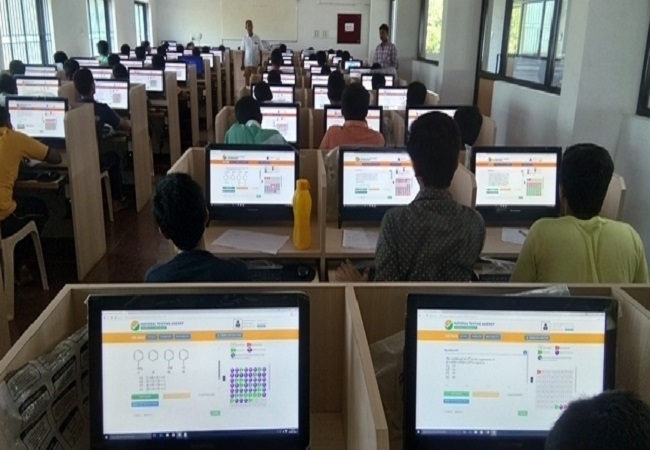New Delhi: As per the public notices issued by National Testing Agency, JEE Main 2020 is scheduled to begin from tomorrow – September 1, 2020. The April examinations were delayed and would now be conducted between September 1 and September 6.
Amidst the ongoing controversy over various exams in the country, NTA is all set to conduct the exam. As many as 8.67 lakh candidates have registered for the examination. Staff made preparations to ensure the necessary COVID protection protocols for conducting Joint Entrance Exam (JEE) Main 2020.
Due to coronavirus pandemic, National Testing Agency has revised the list of items that are allowed inside the examination centre. Check what’s allowed and what’s not below.
Here’s the list of things allowed:
- Admit Card – Duly filled all pages of the admit card
- Government ID like Aadhar Card, Passport, Drivers License, etc. has to be carried by the candidates as instructed on the admit card
- Simple transparent ball point pen
- Additional photograph to be passed on the attendance sheet
- 50 ml bottle of Personal hand sanitizer
- Transparent water bottle would also be allowed inside. Students must ensure that the water bottle is clear and does not have any labels on it.
- No other item will be permitted inside the examination room/hall. The admit card will clearly state what candidates are permitted to carry and what they are not permitted to carry.
Here’s the list of things which are not allowed:
- Mobile phones
- Calculators, any electronic gadget
Rough Sheets would be provided at the examination centres and students are not allowed to carry them. Rough sheets would be placed at the computer by invigilators wearing gloves to ensure hygiene.
Apart from this, students are instructed to wear climate-appropriate clothes. Light coloured clothes are advisable along with open-toe sandals or slippers. Strict social distancing norms would be followed and students are advised to report at the time allotted to them to avoid over-crowding.

